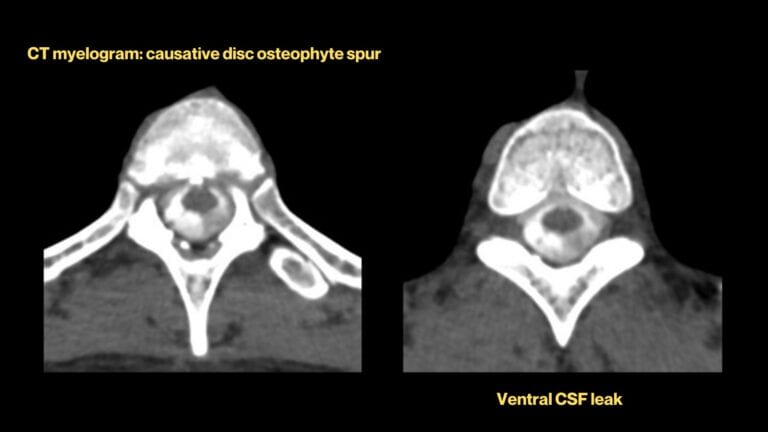Asia had to fight to have her pain taken seriously as a Black woman with an invisible illness. But she found a community online that helped connect her with specialists who correctly diagnosed and treated her spinal CSF leak.
Asia Gibson was 28 and incredibly active, managing a yoga studio and on her way to begin Pilates teacher training, when everything changed. One day after a hard weightlifting workout, she noticed a small twinge in her back. She figured she might have pulled a muscle lifting heavy weights and tried to take it easy for the next few days. But the pain seemed to spread. She began feeling soreness in between her shoulder blades, and then in her neck, and then in her head, a sensation she described as an out-of-this-world kind of head pain that made her feel like her brain was being pulled down into her spine. She knew this was no regular headache, and so she took herself to the emergency department.
There, she was diagnosed with a neck strain due to her weightlifting. She was directed to see a specialist, who concurred with that diagnosis and sent her to physical therapy. Asia dutifully went, but if anything she found that physical therapy only made things worse. Her pain was increasing, and she couldn’t tolerate the dry-needling and other techniques her physical therapist recommended. Her symptoms were so disabling that she was unable to work. The only relief she found was from lying down. Anytime she stood up, the pain was so crippling she couldn’t think straight, and so she was bedridden much of the time.
She felt frustrated that the doctors she saw didn’t seem to take her pain seriously. She was keenly aware of how she existed at the three-way intersection of being a woman, being Black, and having an invisible illness, and it was difficult having to advocate for herself as thoughtfully as possible at a time when she was cognitively not at her best. She realized it wasn’t enough to just report that she was in pain; often, the people she encountered seemed to assume that whatever pain she might have, it was something she should be able to handle. Instead she had to quantify it, emphasize how unusual it was, and make it clear that her pain was real, legitimate, and disabling.
Frustrated by the ongoing pain and concerned about not having answers, Asia did what so many patients do: she looked up her symptoms online. To her surprise she found a community of people who described experiences similar to what she was going through, and it sounded to her like she might have what they had been diagnosed with: a spinal cerebrospinal fluid (CSF) leak. Through this online community, she learned of a neurologist in her area who was familiar with spinal CSF leak. Within a few weeks, she had an appointment—and a potential diagnosis. After being referred to a specialist, she was finally able to undergo the sensitive medical imaging tests that confirmed that she had a spinal CSF leak due to a bone spur. She was treated with a targeted fibrin glue injection, and experienced immediate relief from her symptoms. She’s been upright ever since.


The one thing she wishes doctors knew about spinal CSF leak, aside from understanding that the pain people can experience from it is significant, is that often a positional headache is an important diagnostic clue. While not every person with a spinal CSF leak will have a headache that improves when lying down and worsens upon standing, it’s common enough that a doctor who encounters a patient presenting that way should consider spinal CSF leak as a possible diagnosis to investigate.
For Asia, one of the most frustrating things about living with a spinal CSF leak was the unknown: there was no clear timeline of how long it would take for her to get diagnosed, or get treated, or get better. The support of her family was key to helping her cope during that time, but she also tried to hold on to the feeling she had that eventually she was going to be okay—whatever “okay” might look like. Now, over a year and a half since the procedure she had to fix her leak, she feels like she’s about 85 per cent of where she was before her symptoms first began. She’s slowly getting back into exercising again and adjusting to her “new normal” life post-leak.
Her advice for people living with spinal CSF leak is to trust yourself. “Listen to that voice inside you telling you when something’s wrong,” she says. “You know your own body. Also, just because someone doesn’t physically present themselves as being in pain doesn’t mean they’re not suffering. So just try to extend compassion and grace to yourself and to others, because you never really know what anyone else is going through.”
The team at Spinal CSF Leak Foundation extends our appreciation and thanks to the physicians and staff who assisted with this feature story, and to all those working so hard to help patients.
